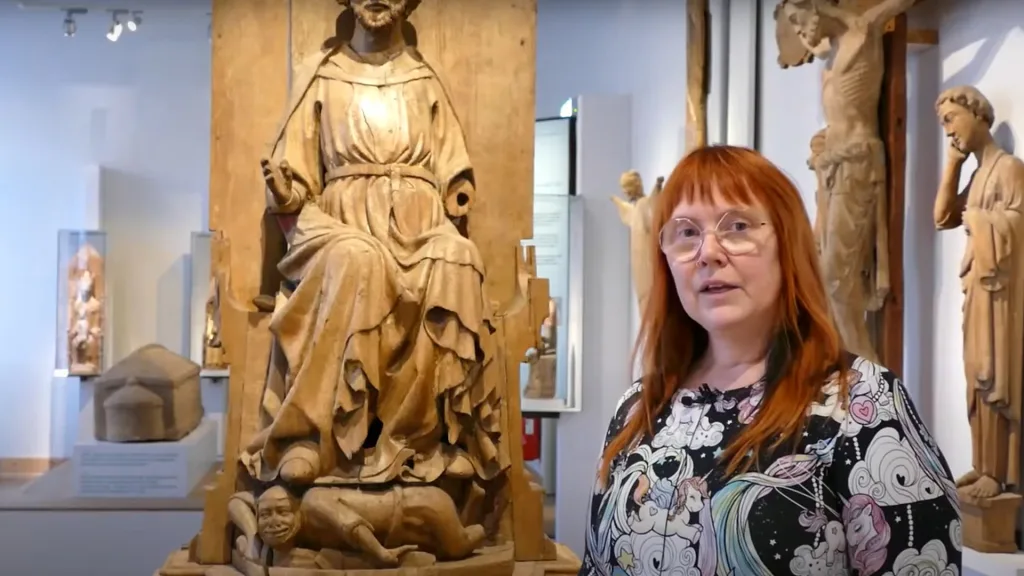This wooden sculpture comes from Bunge Church on Gotland and was made around the early 14th century. The sculpture has a typically Gothic style: somewhat restrained, emotional, and with richly folded drapery.
Saint Olaf is the Norwegian saint-king who gained great popularity in Sweden during the Middle Ages. Many churches are dedicated to him, and quite a few sculptures of him have been preserved. We have several in our collections, and this one from Bunge is a bit special because it gave its name to an entire school. The anonymous master who created this sculpture made several similar works, and is therefore referred to collectively as the “Master of Bunge.”
Saint Olaf is seated on a throne, with his feet resting on what is often called a “subfigure.” This part has been interpreted in various ways: it could represent his executioner, paganism being trampled underfoot, his brother Harald being subdued, or more generally, the defeat of evil.
Looking more closely at the sculpture, you can see fragments of paint that suggest it was originally beautifully painted. There are traces of red on the inside of the folds, and also hints of gold, indicating that his garment may have featured a painted brocade. There are also small remnants of gesso with gilding and blue paint. If you examine the throne closely, you’ll notice a very fine lattice pattern with quatrefoils in the centre.



